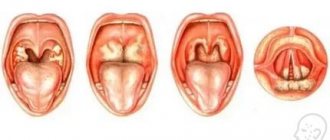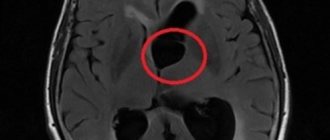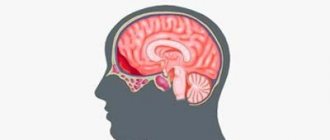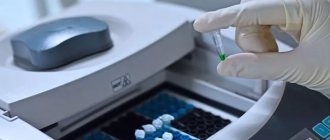- Causes and features of the development of sinusitis
- Why do you need a puncture?
- How is the operation performed?
- Pros and cons of puncture against sinusitis
- Complications after a puncture
- Contraindications and precautions
- Methods and recommendations for the treatment of sinusitis
Sometimes a common runny nose can lead to a serious complication in the form of sinusitis. This disease is an inflammation of the nasal sinuses and occurs as a result of weak immunity, in which the body cannot cope with the attack of viruses.
Causes and features of the development of sinusitis
A runny nose is not the only reason for the development of the disease. A number of pathogens that cause sinusitis include:
- injuries to the nasal mucosa;
- staying in drafts or in rooms with dry air for a long time;
- the presence of polyps or adenoids;
- presence of tumors;
- tuberculosis;
- excessive use of vasoconstrictors;
- allergies.
With purulent sinusitis, difficulties arise with the outflow of exudate due to swelling of the mucous membrane, which is why pus is formed. The disease is dangerous with a high risk of developing otitis media, bronchitis and meningitis, vision complications, and infection of the auditory canals. The risk of complications of sinusitis increases in the absence of proper treatment.
Sinusitis can be identified by several symptoms:
- nasal congestion;
- discharge of pus from the nose;
- swelling of the nasal mucosa;
- pain in the forehead and eyes;
- pain when bending down;
- feeling the taste of pus in the mouth;
- bad breath;
- temperature rise to 38 degrees.
Advantages of contacting SM-Clinic
Our medical center employs some of the best surgeons in the Northern capital. Advanced equipment is used for diagnostics and operations.
At SM-Clinic, preference is given to gentle methods, which are characterized by rapid recovery of patients and no need for hospital stay. In cases where hospitalization is necessary, we provide comfortable rooms with a private bathroom, TV and Wi-Fi, and provide round-the-clock monitoring of the condition of the operated patient.
Why do you need a puncture?
In particularly difficult cases, standard treatment methods do not help, and a sinus puncture procedure is required. It is used to quickly remove accumulated exudate in the paranasal sinuses and alleviate the patient’s condition.
The need for a puncture is determined by the doctor after an examination and obtaining an image of the nasal cavity. Sometimes a puncture is performed to understand the causes of the disease. To do this, purulent discharge is collected for laboratory analysis.
Doctors refrain from performing this procedure if it is possible to treat the disease with other methods. However, in some particularly severe cases (acute purulent sinusitis) and in pathologies, when the lack of treatment threatens serious consequences for the human body, it cannot be avoided, since pus can reach the brain. This threatens inflammation of the membranes of the brain and the membranes of the eyes, which will require immediate surgical intervention, which does not always have positive consequences.
The use of conservative methods of treating sinusitis
The operation is prescribed by a specialist only in very advanced and complex situations. Many people are concerned about the question of whether it is worth getting a puncture for sinusitis and how to avoid it:
- Ear piercing: types of piercings and earrings, care features
- the initial stage of development of the pathological process. The acute form progresses 11-12 days after the illness. If you start treatment in time, you can eliminate the problem with the help of folk remedies, drug therapy, steaming, rinsing and inhalation;
- use of an allergic component. If the inflammatory process is not of a purulent type, but of an inflammatory type, then severe swelling of the mucous membrane forms, and copious mucous discharge from the nose is observed. Modern antiallergic drugs are very effective in this case;
- rinsing the nasal sinuses with various solutions, some of which you can prepare yourself;
- It is important to contact a specialist in a timely manner. If you have had a cold, but some symptoms (stuffy nose, runny nose) still remain, you need to undergo an examination to avoid complications;
- If you decide to have a puncture, you can discuss with your doctor the issue of postponing the operation for a couple of days. During this period, conservative treatment can be undertaken. Without the desired therapeutic effect, you need to find out how to pierce the nose for sinusitis and agree to the operation.
There is no need to be too afraid of the upcoming operation. The statement that you will have to get a puncture constantly, since your nose will no longer be able to clean itself, is untrue. This principle only applies to odontogenic diseases.
To treat sinusitis, conservative methods are primarily used.
How is the operation performed?
It is done in the upper part of the lower nasal passage, where the nasal septum is thinner. The procedure itself is almost painless due to local anesthesia. It uses a special needle with a curved end and a holder that allows you to control the process of needle insertion. The operation is short and consists of a single puncture with slight pressure and possible rotation. Then a syringe is attached to the needle to drain the pus.
After removing the purulent contents of the sinuses, you need to check the puncture site for the absence of swelling, the general condition of the sinuses, rinse everything with saline solution and inject drugs with antibacterial and anti-inflammatory effects through the needle. After removing the needle, the patient should remain on his side in a supine position for 15 minutes. A swab is inserted into the nose to collect any remaining fluid.
A decrease in temperature and a decrease in pain occurs immediately after the puncture. Myths about therapy include the fear that the puncture will remain forever, but the puncture site heals in 2-3 days and heals completely within one month. Usually one surgical intervention is enough, but if there are complications, a second puncture may be required.
What are people afraid of before a puncture?
Earlier we mentioned that a puncture for sinusitis has become surrounded by many fears and rumors. What are they? Let's list the most common ones:
- If sinusitis is treated with a puncture, you will have to repeat the procedure. This is absolutely not true. Acute sinusitis passes quickly, the damaged area heals. However, repeated puncture is sometimes necessary for people with chronic inflammation. Therefore, the answer to the question of how many punctures are done for severe sinusitis is simple: one.
- A nose piercing for sinusitis is dangerous and difficult to tolerate by the body. The wound heals quickly and the bone is restored. Moreover, purulent contents are removed from the sinus. The person gets relief.
- A puncture with severe sinusitis is fraught with complications. False, because patients use antibiotics to prevent them. These can be injections or pills. Thanks to modern antibiotics, there is no need to fear that the condition will worsen.
- A puncture of the maxillary sinus is performed by doctors who are too lazy to treat the patient differently or do not know how to do it. Doctors decide to perform a puncture only when medications and physical therapy do not give the desired result. A puncture is a vital manipulation. Whims are not entirely appropriate here.
Pros and cons of puncture against sinusitis
Positive aspects of the method:
- lack of lengthy preparation for the puncture;
- accelerating the healing process;
- minimal possibility of complications;
- prevention of the development of the chronic stage of sinusitis.
The disadvantages of therapy include that some patients have to do it again. Usually this is not due to its ineffectiveness, but to other factors that provoke the development of sinusitis. Usually this is the presence of a cyst, polyps, deviated nasal septum or other anomalies of the body. Without eliminating the main cause, sinusitis can return every year in a complicated degree.
Indications for surgery on the maxillary sinus
Factors and diseases that are direct indications for surgery:
- lack of effect from conservative methods of treating chronic sinusitis;
- maxillary sinus cysts (formations in the form of bubbles filled with liquid);
- the presence of polyps inside the sinus;
- the presence of neoplasms (if a malignant tumor is suspected, a biopsy is performed);
- foreign bodies of the maxillary sinus, which are a complication of dental interventions (fragments of tooth roots, particles of dental implants, particles of filling material);
- the presence of blood clots and granulations in the cavity;
- damage to the walls of the maxillary sinus.
The most common reason for surgery on the maxillary sinuses is sinusitis - inflammation of the mucous membrane of the maxillary sinus, which results in the accumulation of purulent exudate and the formation of hyperplastic changes in the mucous membrane.
Complications after a puncture
There is a small risk of complications after the puncture, but this happens extremely rarely. It is important to understand that this surgical intervention does not treat the root cause, but can help in critical cases, with pathologies and to alleviate the general condition.
Complications are possible in the event of an abnormal structure of the nasal sinuses or if the doctor does not work correctly, which happens extremely rarely. Usually this:
- short-term bleeding, which can be stopped with a simple tampon with a vasoconstrictor;
- fluid getting into the eye sockets due to a puncture of the upper sinus, which threatens inflammation and problems with the mobility of the eye muscles;
- development of a hematoma due to a puncture of the posterior wall of the sinus;
- increased blood pressure;
- shock or fainting in the patient due to psychological discomfort from the procedure.
When is this procedure prescribed?
Puncture of the maxillary sinuses is prescribed in the following cases:
- the patient’s serious condition, when pain in the area of the maxillary sinuses and pronounced headaches cannot be relieved with the help of medications and other manipulations;
- the presence of polyps, cysts and other neoplasms that interfere with the release of mucous masses naturally through the nasal anastomosis;
- if conservative therapy, including the use of medications and rinsing, did not bring effect and relief;
- high body temperature, which does not go down for a long time, and the symptoms of rhinogenic intoxication of the body rapidly increase;
- accumulation of fluid level in the maxillary sinus, which is determined by x-ray or computed tomography of more than half of its volume;
- the presence of suppurating blood in the maxillary cavity after a cheek injury;
- when it is difficult to make a correct diagnosis - when x-rays and clinical symptoms are contradictory, and the patient’s condition sharply worsens.
In all of the above cases, mucus and pus can only be evacuated mechanically, that is, using a puncture.
Contraindications and precautions
Contraindications for puncture include the specific structure of the facial bones. It is prohibited to perform surgery for blood diseases. In the case of mental disorders, it is important to have a psychiatrist’s diagnosis before the puncture, because this therapy can frighten or cause negativity.
It is unacceptable to perform puncture manipulation on children under 4 years of age, since their bodies are not fully developed, as well as on older people. Pregnant women should be careful, since their immunity is weakened and even a minor cold can cause sinusitis. Treatment should be strictly under the supervision of specialists, and gentle medications should be selected.
During rehabilitation, there are a number of rules that must be followed. It is recommended to avoid going to baths, saunas and swimming pools for a while. The possibility of general and local hypothermia is unacceptable. It is extremely important to take the entire course of antibiotics prescribed by your doctor. After the procedure, an additional examination is carried out, and based on the results of the image or tomography, a conclusion is made that the treatment is complete.
Rehabilitation
The consequences of the operation may be nosebleeds and local discomfort. The duration of the discomfort is usually two weeks. In the postoperative period, the patient is prescribed antibiotics, rinses, and regular dressings are done.
In the first hours after the procedure, limit physical activity. If possible, bed rest is recommended. Do not blow your nose, do not swim in pools and ponds. To relieve swelling, the doctor may prescribe rinsing the nasal cavity with saline, antiseptic or herbal solutions. Antibiotics are optionally prescribed to prevent post-procedural infection.
After microsurgical and radical maxillary sinus surgery, a tampon or drainage is left in the sinus for 8-48 hours. After this time, they are removed under local anesthesia through the nasal passage. There may be a temporary loss of sensitivity in the area of the upper lip and wings of the nose, and numbness of the teeth on the side of the intervention.
After endoscopic maxillary sinusotomy, taking painkillers is sufficient. Regardless of the technique used, it is important to maintain a high level of oral hygiene - brush your teeth twice a day, gargle with an antiseptic, and follow other doctor’s instructions.









